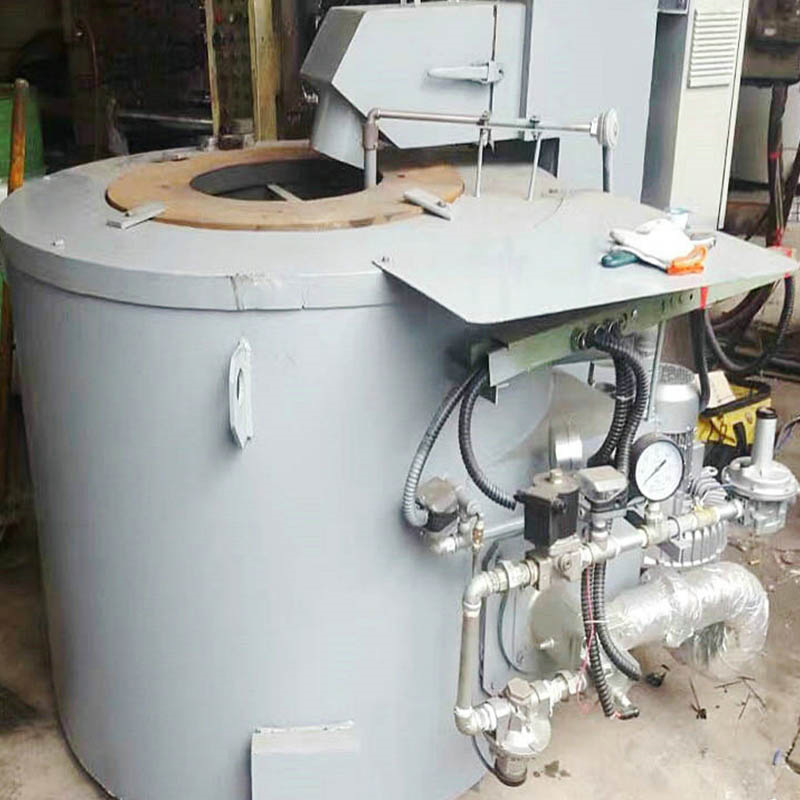A crucible furnace is one of the simplest smelting equipment, which is mainly used to melt non-ferrous metals with low melting points, such as copper, aluminum and their alloys. In this kind of furnace, the alloy is melted in the crucible, and the heat is transmitted to the charge through the crucible, and the combustion products of the charge are not in direct contact, so the chemical composition of the alloy is almost not affected by the furnace gas, and the temperature of the alloy liquid is also relatively uniform, which is its main advantage.
When smelting, the metal is placed in a container called a crucible. The crucible is placed in the furnace and heated with diesel, heavy oil, gas or coke as fuel. Depending on the requirements, the crucible can be made of different materials such as graphite, refractory clay, cast iron, etc. There are several types of furnace bodies, such as pit type, fixed type and rotating type. There is also a resistance crucible furnace, which generally has a small capacity and is mostly used in laboratories.

The crucible furnace has a simple structure, small investment and fast production, and is widely used in the foundry workshops of small and medium-sized non-ferrous alloy processing plants and machine manufacturing plants. However, the crucible furnace has low heat utilization, small output, poor labor conditions, and is no longer suitable for large-scale production.
The crucible furnace has always been a device for smelting copper alloys. Nowadays, the proportion of crucible furnaces used for smelting copper alloys is very large. In ancient times, charcoal was used as the heat source for smelting, but now it is heavy oil, gas, electricity, and coke. Recently, in order to save energy and protect the environment, and to improve efficiency, some heat sources have been changed from heavy oil to gas and some to induction furnaces.
The same trend is observed in crucible furnaces for smelting light alloys such as Al and Zn. Large-scale melting equipment has been converted to reverberatory furnaces, rotary furnaces, induction furnaces, etc., and small holding furnaces for small batch production or casting are still crucible furnaces.